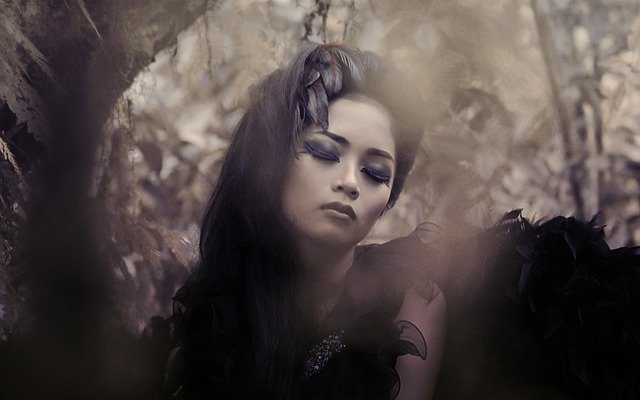
It’s time to enter a world of photographic excellence! This art has many kinds of techniques you can explore. Since photography is so personal in nature, it can be a bit difficult to discover what type of photographer you are. The tips offered below will help you get on the right track.
Snap your photographs quickly and instinctively. If you hesitate too long, the moment will pass and you will have missed the opportunity to get that perfect shot. A camera which allows you to make quick photos will give you the best results.
Serious photographers have dSRL cameras. The letters DSLR are an abbreviation for digital single lens reflex, and it is really the best type of camera to take professional quality shots. For the most detailed pictures and largest image sensors, you want to invest in a full-frame DSLR.
Experiment with new ways to use your camera, and take some original pictures. Personal style should be in a good photograph to express your point of view. Try to stay away from taking pictures that are described as ‘classic’. Try new, unique angles, and be creative.
An important factor in photography composition, is framing. You should zoom in on your main focal point to eliminate anything that takes away from your main subject. This can get rid of all the focal points you don’t want, and keep clutter out of your photographs.
A lot of people think beautiful, sunny days are good pictures, but direct sunlight can actually harm a photo sometimes. The sun will cast awkward shadows along with glaring, and cause uneven highlights that will make your subjects squint when they look into the camera. Aim to take outdoor pictures during the two golden hours, dusk and dawn.
Only select your very best photographs to display. Don’t show every picture you’ve ever shot, and don’t show too many photos with the same theme or subject. This will make looking at your pictures very boring to everyone else – no one likes to look at the same subject over and over. Keep your photo displays fresh and interesting, and show off a variety of aspects of your creative photography talents.
While holding onto the camera, your arms should be closely beside the body. Hands should be beside and under the camera. Doing so should reduce shaking and lead to clear images. Keeping your hands under the lens and camera, instead of holding it at the top, will also help you avoid dropping the camera by accident.
Here’s a photo trick that you should try. Learn the basics about different types of shutter speeds. There are S, P, M,and A settings on your camera. The ‘P’ button will take you to the program mode. If you choose this option, your camera will do all of the work for you because it commands the camera to judge what is right for the image. When you don’t know which setting to use, the “P” setting will help you capture a great shot.
Whenever you are trying to decide which of you pictures to show, it is important that you select your best work. Keep things fresh and not repetitive. Just because you took a photo does not mean you have to show it. You photos will not be interesting and hold your viewers attention if you do not mix things up and photograph different subject matter. Aim to show a collection of distinctly different photographs that demonstrate a wide range of your photography skills.
It’s best to use a blurred background when taking portrait shots. When everything in the picture is focused including the background, it will make the picture a bit busy and it will be hard for the viewers to specifically focus on the subject of the picture. You can do this by making the background farther away than your subject.
Experiment with all of your cameras features, as well as color composition and the angle at which you take the photo. You can get an interesting, artistic photo without having an amazing subject to shoot. A good photograph entails making a photo of something unoriginal interesting, because of their creative skills and talent. Experiment with your photos until you discover your personal style.
Explore your camera’s built-in features, or experiment with odd angles and color palettes. It’s not required that you have a unique object for a high-quality photo. A good photographer makes even insignificant objects look interesting. Experiment a lot in order to develop your style.
Pictures of people are great. It’s important and often legal that you gain permission before taking someone’s picture. Pictures like these help you to find more vivid memories when you look back, even if at the time the people seemed unremarkable. Look for people with interesting faces, candid expressions and casual, local dress.
Use your camera to capture every detail of your travels. Although they may not seem to matter much at the time, they can help you vividly remember your journey when you think back about it. Consider photographing things like signs on the street, odd storefronts, tickets to a museum or the food sold by street vendors.
Pre-focus your camera and move to where your subject isn’t dead center in the frame. Centering a subject in a picture is an expected tactic and may detract from the interest of the photo. Shooting a photo that is not exactly centered on the subject may produce more interesting results for your viewers.
You need to find a suitable subject to photograph. A good subject is the most important thing when it comes to photography, no matter what kind of camera you have. You should choose carefully which objects inspire you or look for a model that can actually pose for you.
As people, we are always looking for the balance in life. We want things to be centered. You can make your pictures look original by placing your main subject slightly on one side, rather than right in the center of your picture. Turn off the auto-focus, which will make the lens zero in on whatever it is pointing at. You should be able to set the focus manually and lock it down before actually shooting your picture.
When shooting a picture, judge the surroundings and choose the right aperture, shutter speed and ISO. These three features determine the exposure of your picture. Unless you’re trying for a particular effect, you probably want to avoid taking shots that are over- or under-exposed. With a little experimentation, you can strike the right balance between the 3 settings to deliver the results you want.
Ordinarily, the subject makes “eye contact” with the lens of the camera. You can take more interesting pictures by asking your subject to focus their attention on a point outside the camera’s field of view. You might also direct the subject to focus on an object or person within the frame.

Taking photos with a like-minded photographer or joining a photography group are both ideas to consider. Other people who share your interests can provide you with great information, but try not to let them influence the way you take your pictures. Look closely at the photographs that you took while out with another photographer, and examine how the same subject can be seen differently by different people.
Carefully read the entire manual that came with your camera. Manuals are often thick and bulky. They are usually thrown away or stored somewhere and forgotten. Open it up and read it instead of doing this. You will find a lot of information that can improve your picture taking and stop silly mistakes from happening.
If you plan to shoot images indoors with fluorescent lights overhead, you should make an appropriate adjustment to your camera’s white balance settings. Subjects will not look their best under the harsh light from fluorescent bulbs, so adjust the color settings on your camera.
When taking a picture of a group of people, let them know what they should wear before the shot. While it is unnecessary for everyone to match, your photos will turn out nicer if everyone is wearing complementary colors. Suggest neutral shades or warm colors, as they will blend with natural environments. If your subjects prefer bright colors, suggest that they also wear black to balance out your photo.
A principle of good composition you should learn is to limit the subject matter in a picture. Why would you want to clutter your shots? Keeping things simple in your photos is what catches your viewer’s attention, simplicity often creates a big punch!
Make sure you take the time to learn how the ISO feature on your camera works. The higher the ISO is set to, the more that is seen and this will affect the grain that is printed onto your photo. This can be a terrible thing to happen to a shot unless your shot requires the grain.
Play around with perspectives, expressions, and scale to assess their effect on your pictures. If a mundane subject is situated to make it appear out of place or out of proportion with its surroundings, the resulting picture will be especially intriguing. Work on each of your shots to get a fresh take on something familiar.
One thing that can make photographs unusable is red eye. Avoid red-eye by using the flash as little as possible. If you must use a flash, direct your subject to avoid looking into the lens. Many cameras have a special setting that prevents red eye.
People usually just look right into the camera. Have the subject of your photo focus their eyes on a distant object, rather than the camera. Also, you can try having them focus on something that is in the frame, but still not looking at the camera.
When you are using a film camera, you should consider what brand film you want to use. Try different films and you should soon find a favorite one. There is not brand better than another. Once you have found the right film format, film brand is up to you.
Resist the temptation to maximize the number of available shots you can get on one digital card; instead choose settings that will allow a far greater quality for output printing. Lower settings are only appropriately used for images that are displayed on the computer.
Identify the theme or concept of every photography session. Take a minute to plan out your shot by analyzing lighting, the background, your focal point, colors, the subject matter and the overall composition you want to see. This will help you avoid taking a bunch of unrelated photographs. Approaching photography in this way can create motivation and inspiration that will enhance the final product.
Learning about the ISO settings on your camera can be important to the way your pictures turn out. There will be more grain visible in your photograph the higher your camera’s ISO setting is. This can completely ruin your shot.
Exercise patience with setting up your subject into the right pose. If you find that photos taken during family gatherings never seem to turn out well, the problem could be due to the candid nature of the shot, and the resulting element of surprise. You will then be able to get a better shot.
You don’t always have to take your photographs with the camera held horizontally! Turning your camera vertically can make a good, striking shot. Zoom in if you need to get the full effect, or zoom out so that you can get a full body shot of a human.
Learn how to best use your camera’s flash. Using it for every photograph is a mistake. Too much light can ruin a great shot. Only use the flash in low light.
You can use a lot of different techniques to take good shots. Not all photography methods work well for everyone, and finding the right one can make all the difference. Hopefully, these tips provide a starting point as you compose your own photos.
You should try using ordinary things when trying to get inspiration. Take some creative shots using some objects you can find in everyday situations. Take shots of a sink or a trash can, for instance, and experiment with how the shot is composed. You can make your photo as unique as you want. Finally, challenge your capabilities to add a fun component to your work.


